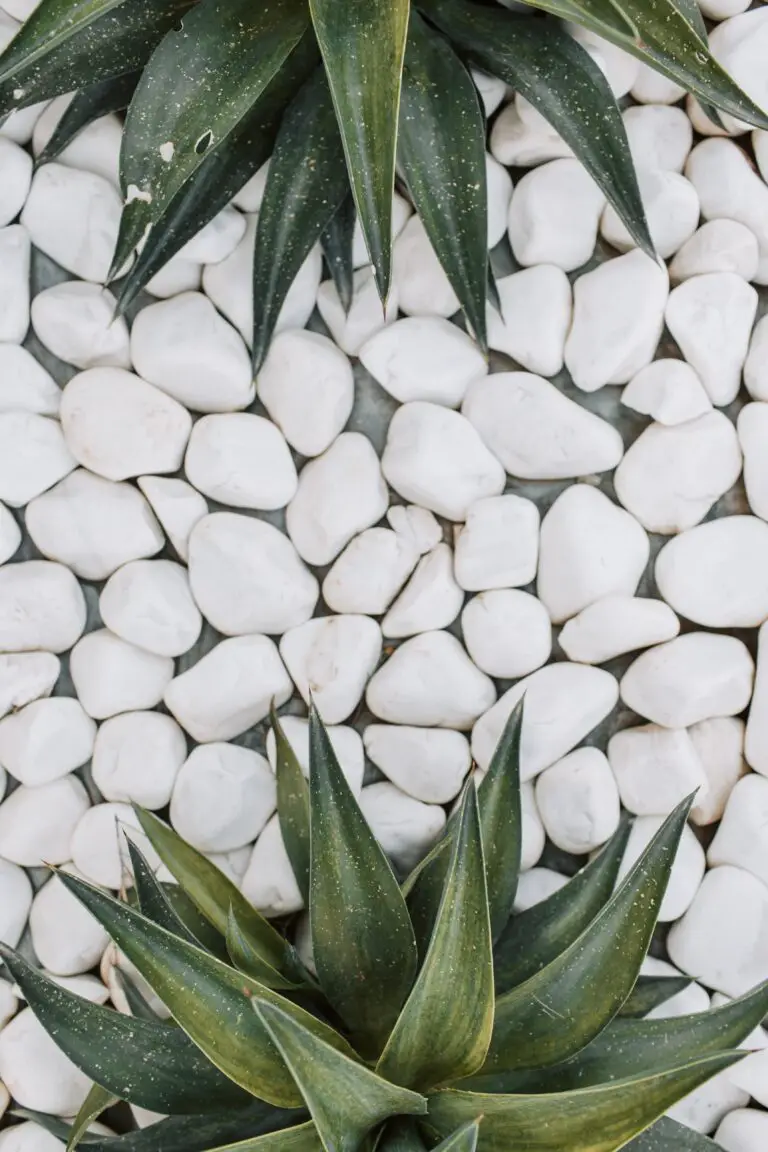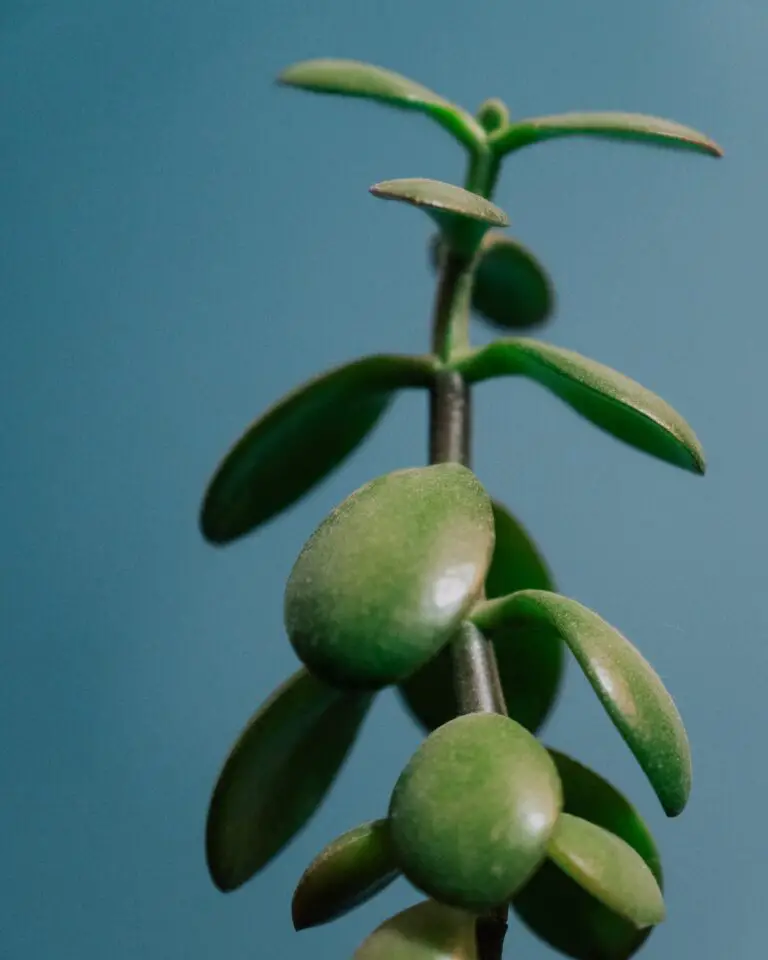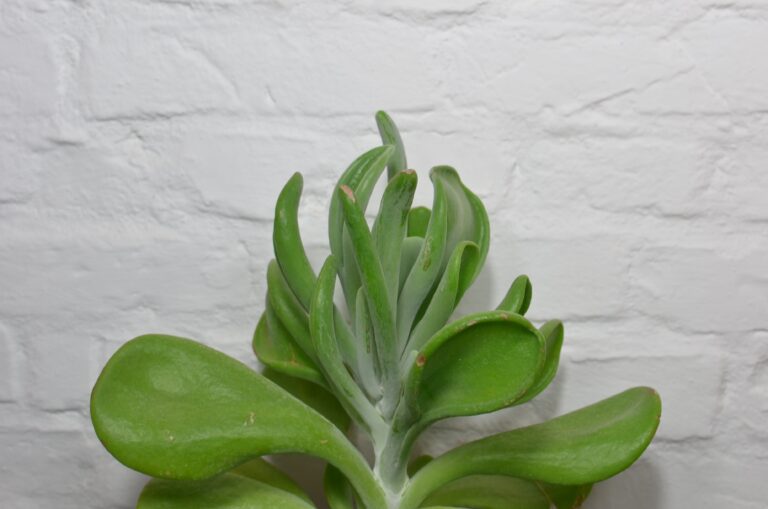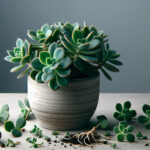Introduction to Crassula Propagation
Imagine being able to expand your lush green kingdom with nothing more than a single leaf. That’s the magic of Crassula propagation! Crassula, the beloved Jade plant, is a succulent that promises new beginnings when its leaves are plucked and replanted. Why settle for one when you can cultivate an entire forest of these emerald beauties?

This method isn’t just a party trick; it’s a testament to the resilience and adaptability of Crassula plants. Using leaf cuttings is a simple yet effective way to propagate your succulents, ideal for novices and seasoned green thumbs alike. You don’t need a green thumb so much as you need a leaf to succeed! By choosing this method, you are opting for an efficient, cost-effective, and incredibly satisfying way to increase your collection.
Think of it as a botanical photocopier—if one leaf can create a new plant, imagine the potential when you start with several. Whether you’re looking to add volume to your verdant displays or share the love with fellow plant enthusiasts, Crassula propagation from leaves is a green light to grow, grow, grow!
Essential Supplies for Leaf Propagation
Alright green thumbs, let’s get down to the nitty-gritty of propagating Crassula from leaves. You wouldn’t bake a cake without a pan, right? The same goes for leaf propagation – having the right tools and materials isn’t just helpful, it’s crucial! Let’s talk shop about what you’ll need to turn those humble leaves into full-blown succulent sensations.
Quality Soil: The Foundation of Success
First up on our list is the foundation of all plant life – soil. But not just any dirt will do! For Crassula propagation, you’ll want a well-draining mix that’s like a cozy bed for these leafy babies. Imagine them snuggling in, laying roots, and puffing up – all thanks to a quality soil mix that offers just the right balance of aeration and moisture. It’s the difference between a good night’s sleep and tossing and turning on a lumpy mattress.
Containers: Your Leaf’s First Home
Now, where to house these potential green gems? Containers! But hold up – we’re not talking clunky pots that you’d use for a mature plant. You’ll want shallow trays or small pots that cater to tiny roots, giving them ample room to stretch out without swimming in excess soil. It’s like choosing a cozy studio apartment for your leaf cuttings over an echoing mansion. Practical, snug, and just right.
The best part? Once you’ve gathered your essentials the process is simple, and watching your leaves grow roots and eventually sprout tiny new plants is nothing short of magical. To see this magic in action, check out this video for some real-life tips:
Remember, patience is your best pal throughout the propagation journey. It might take weeks or even months, but the satisfaction of growing your own Crassula from a single leaf is well worth the wait. Keep at it, future plant pros!
Choosing Leaves: Criteria for Success
When you’re on the hunt for the perfect leaf to spearhead your Crassula propagation adventure, think of yourself as an art connoisseur sifting through a gallery of greenery. Not any leaf will do! You’re looking for the Monet of leaves, a piece that stands out with a promise of flourishing beauty. But what makes a leaf worthy of selection? To ensure your leafy cutting translates into a robust Crassula offspring, there are a few tips and tricks to keep in mind.
First things first, size matters! Aim for substantial, full-grown leaves that have had a chance to bask in the sun and feed on the plant’s nutrients. They are your best bet for a strong start. These leaves have seen a bit of life and have enough energy reserves to support a new plant. But avoid gigantic leaves that might be past their prime—a delicate balance is key.
Next, the color tells a story. You want a leaf that’s a vibrant, healthy green, free from any yellowing or brown spots. Discoloration can signal distress or disease, making such leaves poor candidates for propagation. It’s like picking a runner for a relay race—you need someone full of vigor, not someone who’s about to tap out.
Another thing to look for is texture. A leaf fit for propagation should feel like a succulent’s dream—plump and firm to the touch, indicative of a well-hydrated state. After all, succulents are renowned for their water-storing prowess. If the leaf feels thin or flimsy, it might not have the stamina to cross the finish line to full plant maturity.
Let’s not forget about the pedicel, the tiny stem that connects the leaf to the plant. When removing a leaf, be as precise as a surgeon. A clean break is crucial, leaving no ragged edges that could invite pathogens. Think of it as a tidy severance, smooth and immaculate, ensuring a fresh start for both the parent plant and your future protégé.
For those who are more visual, why not take a glance at a practical example? This video showcases how to select the perfect Crassula leaf for propagation, taking you through the process with hands-on demonstrations.
Now that you’re armed with this leaf-selecting lore, you’re ready to commence your own Crassula propagation tale. And remember, while not every leaf will propagate, with these guidelines, your chances for green-thumbed glory are greatly improved. So go ahead, pick your leafy champion, and embark on this botanical journey with confidence!
Step-by-Step: Crassula Leaf Propagation
Ever wonder how those succulent enthusiasts turn a single, lonely leaf into a thriving Crassula plant? It seems like magic—but there’s a method to the madness, and it’s easier than pulling a rabbit out of a hat. Let’s get your green thumbs working with a simple guide on turning Crassula leaves into luscious, full-grown beauties.
First things first, you’ll need to select a healthy Crassula leaf. We’re not talking about grabbing any old leaf; it should be plump, vibrant, and free from any damage. Gently twist the leaf off the stem, ensuring it’s a clean pull because a torn leaf might struggle to take root.
Now, patience is key; let your chosen leaf sit in a warm, dry place. This is the “curing” stage, where the end where it was attached to the stem will callous over. Picture a plant version of a scab forming over a wound—it’s fascinating how nature works, isn’t it? Keep the leaf out of direct sunlight during this time; we’re not baking cookies here.
Once the callous is firm to touch (think a few days to a week), it’s showtime! Prepare a pot with well-draining soil—crassulas despise soggy feet. Then place the leaf on top of the soil without burying it. Yes, just let it sit there like it’s lounging on the beach. Gradually, roots will search for soil, and a new baby plant will emerge like a phoenix from the ashes.
For a hands-on demonstration, feast your eyes on this video that walks you through the entire process, complete with visuals to guide you every step of the way.
Keep your sprouting cutting in indirect light, and resist the urge to overwater. A good rule is to wait until the soil is dry before giving it a drink. Before you know it, you’ll have a little succulent that’s all yours. It doesn’t take a botanical genius – just a touch of care, a pinch of knowledge, and a sprinkle of excitement.
Wondering where to find additional savvy tips for Crassula propagation? This guide is chock-full of nuggets of wisdom for those looking to expand their succulent collection or just curious about the process.
So put on your plantsman’s hat, follow these steps, and watch as your Crassula leaf begins its transformation. Before you know it, you’ll be the proud parent of a bouncing baby succulent. Just remember, great oaks from little acorns grow—or in this case, great Crassulas from little leaves!
Optimal Conditions for Rooting and Growth
When it comes to giving your Crassula leaf cuttings the best possible start in life, think of creating a tiny plant paradise where every factor is tailored to encourage those tender roots to emerge. We’re not just throwing seeds to the wind here; we’re architecting an environment that whispers growth at every turn. It’s a delicate dance of light, temperature, and humidity that makes all the difference.
Let’s kick off with the light—picture a soft, dappled sunshine caress rather than a harsh midday glare. Crassula cuttings adore bright, indirect light, much like that coveted spot by a large window where you love to bask with a good book. It’s that sweet spot—enough light to tempt the shoots out, but not so much that they retreat in sunburnt defeat. Here’s a brilliant care guide that illustrates just how important light quality is in the rooting saga.

As for the mercury readings on the thermometer, think cozy spring day warmth ranging from 65-75°F (18-24°C). A nip in the air will have your cuttings shivering rather than sprouting, so keep that temperature snug and stable.
The air itself holds another secret—humidity. In the world of Crassula propagation, moisture in the air is like a nurturing embrace for the little guys. But tread carefully; you want to avoid the clammy handshake effect of too much humidity that can lead to mold and rot. Instead, aim for a gentle misting, creating an environment that’s just moist enough to say ‘roots are welcome here.’
By combining these elements effectively, we set the stage for a remarkable transformation. Remember, successful propagation doesn’t happen overnight. Uncover even more about nurturing these succulents, and watch as that patient cultivation turns into lush, green growth. This is not just plant care; it’s an art form where you’re the artist, and every leaf can become a masterpiece.
Aftercare: Ensuring Healthy Development
You’ve successfully propagated your Crassula leaves, and you’re on the way to becoming a true green thumb! Now, let’s focus on the little wonders that have sprouted. Your baby Crassulas need just the right amount of TLC to flourish. Imagine them as tiny green athletes in training – they need a precise regimen to grow strong and hearty.
Watering: Less is More
First things first, water – it’s crucial, but moderation is key. Think of watering like seasoning a gourmet dish; too little and it’s bland, too much and it’s ruined. For your leaf cuttings, you’re aiming for a gentle mist, just enough to keep the soil slightly damp. Overwatering is the nemesis; it spells doom and soggy despair for your tender plants. A spritz every few days is your mantra, adapting to the humidity levels of your surroundings.
Nutrition: A Balanced Diet
Feeding your Crassula is a bit like crafting a nutrient-packed smoothie. They require a balanced blend of fertilizers, but only once they’ve established some roots. As you’d advise a friend who’s new to working out, ease into it – a diluted, balanced fertilizer will serve as the perfect post-workout drink for your burgeoning succulents. Come the growing season, you can gradually increase the feed, just as an athlete would up their protein intake to build more muscle.
Repotting: Room to Grow
Eventually, your Crassula champions will need more space – a larger home to stretch their roots. When you notice the roots have taken up residence within their initial confines, it’s time for a pot upgrade. This doesn’t mean a mansion-sized pot; rather, increase the pot size incrementally. Remember, a cozy, snug fit promotes a hospitable growth environment.
For a practical look at aftercare, I found a great video to help you visualize the process:
And if you’re thirsting for more information on keeping your succulents in prime condition, have a look at our comprehensive guide on Crassula care. It’s filled with sun-soaked advice and dappled with wisdom on suiting your Crassulas’ sunshine needs.
Remember, whether you’re caring for Crassula, training for a marathon, or mastering a craft, patience and diligence lay the groundwork for success. Watch over your leafy progeny with the same care you’d check on a slow-cooking stew, and soon enough, they’ll be the robust, succulent splendors you’ve envisioned. Now, roll up your sleeves – it’s time to nurture the next generation of green treasures!
Troubleshooting Common Propagation Issues
So, you’ve embarked on your propagate-from-leaf journey with your Crassula and hit a hiccup – fret not, green thumbs! Like any good plant-parent, recognizing the signs when your succulent is screaming ‘SOS!’ is the key to thriving flora. Let’s troubleshoot together some of the quirks and quandaries that may occur during the propagation process.
Spotty Leaves or No Roots? Let’s Dive In
You’ve snipped a healthy leaf, laid it on the soil, and waited. But instead of tiny roots, you’re seeing spots, or worse, the leaf is as lifeless as a desert dune. Before you call it a flop, remember: propagation is part patience, part sleuthing. Spotty leaves could be a mushy misstep – too much moisture is often the prime suspect. Damp conditions are a playground for fungi, which love to feast on your delicate leaves.
Now, if roots are shy and no-shows, take a closer look. Are they getting enough light, or have they been sunbathing a tad too long? Balance is the mantra here – think bright, but indirect, as if on a sun-dappled shoreline, not the full-blaze of a midday sun.

Wrinkly Leaves Falling Flat
If your Crassula leaves start to get more wrinkles than a shar-pei puppy, don’t despair. This can be a sign they’re giving their all to push out those pretty little roots. Just make sure they’re not parched. Like a weary traveler in need of an oasis, those leaves need just a sip – a misting of water might just be the ticket to plump them back up.
But, and it’s a crucial but, avoid drowning ’em like a newbie swimmer in the deep end. Too much water and you’ll have rot on your hands faster than mold on forgotten bread. A fine line exists between just right and just… wrong.
Patience Wearing Thin? Rome Wasn’t Built in a Day
Perhaps the most trying test of all: patience. In our fast-paced, instant-everything world, waiting for tiny roots to emerge can feel longer than waiting for paint to dry. Remember, friends, propagation is a marathon, not a sprint. Those leaves are preparing for a lifetime of growth, and they won’t be rushed.
So keep calm and carry on checking in on your leafy wards. Each day might not bring visible changes, but beneath the surface, they’re mustering all their strength. With the right care, your Crassula will flourish, and you’ll be the champion gardener witnessing the magic unfold.
Creating a Lush Crassula Collection
For those with a fondness for succulents, specifically the charming Crassula varieties, the venture of expanding your green family is a delightful pursuit. The art of leaf propagation, a simple yet intriguing process, can help you multiply your Crassula trove with ease. Imagine transforming a single leaf into a full-blown, thriving plant – that’s the magic of propagation. But where do we start, and how can we ensure success while creating an eye-catching assortment? Join us as we delve into the green heart of Crassula propagation.
In the realm of leafy replication, the Crassula stands out as a prime candidate. Each plucked leaf has the potential to sprout roots and spawn a new-generation plant. Think of these leaves as nature’s own cloning kits – all they need is some soil, a touch of water, and a cozy corner to bask in indirect sunlight. Now, picture this: your windowsill lined with tiny terra cotta pots, each harboring a leaf that could soon unfurl into a miniature garden of vibrant Crassula. The sense of anticipation is palpable as you watch and wait for the telltale signs of life from these succulent fragments.
Propagating for Prosperity
Propagating Crassula isn’t just about growth; it’s about strategic diversification. By choosing leaves from various Crassula species, you can curate a collection that’s rich in textures, shapes, and shades. Imagine a leaf from a ‘Jade Plant’ nestling next to one from a ‘String of Buttons’, each charting their own path to plant adulthood. It’s like orchestrating a botanical symphony where each note is a different texture, and every crescendo is a burst of leafy splendor. You can even take cues from the rising succulent trends, picking leaves that resonate with your aesthetic instincts, ensuring that your collection is both contemporary and timeless.

But it’s not just about cloning. Once your Crassula clones mature, you enter a new phase of green-thumbed creativity: arranging them in a way that’s pleasing to the eye and the soul. A scattering of different sizes and colors, thoughtfully placed, can transform a mundane shelf into a tableau of succulent artistry. It’s akin to composing a living mosaic, where each piece is a Crassula that you’ve nurtured from leaf to lushness.
As you journey through the propagation process, remember that each leaf is an echo of the parent plant, inherited with all its resilience and beauty. With patience and care, your fledgling Crassula collection will burgeon into an array of green marvels, a testimony to the life that thrives under your nurturing hands. So, let your curiosity and your love for these succulent gems guide you, and revel in the joy of seeing your Crassula ensemble come to life, one leaf at a time.
Frequently Asked Questions
Ever find yourself wondering about the best ways to propagate your Crassula? Whether you’re a seasoned green thumb or just starting to dip your fingers into the soil of succulent growing, you’re not alone! Here’s a down-to-earth roundup of the most common questions buzzing around Crassula propagation by leaves.
Can You Really Grow a New Crassula from Just a Leaf?
Absolutely! In fact, it’s one of the coolest plant tricks in the book. Imagine taking a single leaf from your Crassula and watching it sprout roots and eventually grow into a whole new plant. It’s like leafy magic, and it’s super easy to do. Just place a healthy leaf on well-draining soil, give it some love (and occasional water), and voilà—an adorable mini Crassula will appear.
How Long Does It Take for a Crassula Leaf to Take Root?
Patience is key when propagating Crassula leaves. Typically, it takes a few weeks to a month for tiny roots to peek out from under those plump leaves. But don’t rush it! Give it time, and before you know it, you’ll have a cluster of little rootlets reaching out into the soil, seeking to establish a new home for your future succulent buddy.
What Kind of Soil Should I Use for Propagation?
Think of soil as the comfy bed where your leaf will lay its roots. You want to make sure it’s just right—not too dense, not too loose. A well-draining, gritty succulent or cactus mix will be perfect. This will mimic their natural, rocky habitats and encourage healthy root growth without retaining excess water that could lead to rot.
Real-Life Success Story: Sarah’s Crassula Jungle
Meet Sarah, a fellow plant enthusiast who turned one Crassula plant into a lush Crassula jungle—right on her windowsill! She started with a leaf she found on the floor of her local plant shop, got permission to take it home, and with a sprinkle of patience and some TLC, that single leaf grew into multiple full-grown plants. Sarah’s story is a real-life testament to the amazing potential of these resilient plants.
Visual Learning: Watch the Magic Happen!
Seeing is believing, right? Check out this step-by-step video that takes you through the process of growing a jade plant from a single leaf. It’s easy, engaging, and you might just learn a trick or two to kickstart your own propagation journey!
Remember, the world of Crassula propagation is full of excitement and growth—quite literally. Keep these FAQs in mind, and you’ll be on your way to expanding your succulent collection and maybe even sharing the love with friends and family. Happy planting!



